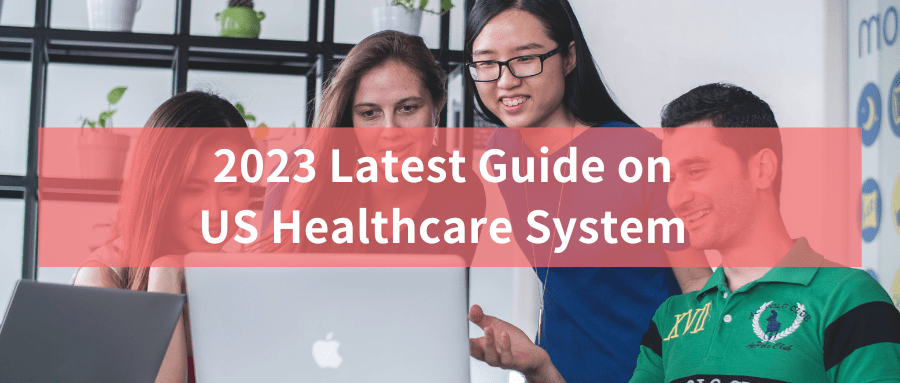[2023 Latest] International Students’ Guide to the US Healthcare System

Navigation
1. How to find the right healthcare in US?
For Student Medicover customers, you can search for participating physicians, hospitals, facilities, medical equipment, or supplies in your local area within 5 minutes through this website.
The website is pretty intuitive to use, but the more conscious decision making falls into choosing the right health facilities and doctors. Below we list the different types of facilities in the US and the common situations when choosing one.
❖ Primary Care
Visit your Primary Care Physician for:
- Preventive Care
- Follow-up Care
- Sicknesses and Injuries during business hours
❖ Special Care
A specialist is a doctor with expertise in specific area of medicine. If you’re enrolled in Student Medicover, you do not need a referral from a primary care physician to visit a specialist. We highly recommend you visit a primary care physician if you are not sure about which type of special care you are looking for.
❖ Online Doctor
Through HealthiestYou, you can speak to a physician via phone and/or video chat* for diagnosis and treatment of many different acute sicknesses. There are no copays or coinsurance to utilize HealthiestYou, if you are a member of the plan. (A $40 consultation fee applies for non-members.)
Visit your online doctor for:
- Rashes
- Minor infections
- Sore throats
❖ Urgent Care
Sometimes you may need care fast but your primary care physician may be unavailable. Urgent care centers can help treat different minor injuries so you don’t have to wait as long as the emergency room. Chances are, the price goes down as well.
An urgent care center can help with:
- Minor cuts
- Sprains & strains
- Minor broken bones
- Allergies
- Headaches
- Rashes
- Fevers
❖ Emergency Room
If you’re seriously injured or experience other life-threatening health conditions, call the emergency hotline (911) or visit the nearest emergency facility. If you are experiencing non-life-threatening symptoms, visit an urgent care instead.
An Emergency room can help with:
- Heavy bleeding
- Chest pain
- Major burns
- Difficulty breathing
- Large open wounds
- Sudden changes in vision
- Severe head and/or spinal injuries
2. Over the counter (OTC) Medications
In the U.S., there are more than 80 classes of over-the-counter (OTC) medications, ranging from acne medicines to weight loss products.
OTC drugs are medications that are safe and effective for use by the general public without seeking treatment by a health professional. These drugs are usually located on shelves in pharmacies, grocery stores, and even in gas stations, such as CVS, Walgreens, and Rite Aid, Target, Walmart, and Costco.
OTC medicines treat a variety of symptoms due to illness including pain, coughs and colds, diarrhea, heartburn, constipation, acne, and others. Popular examples include pain relievers like acetaminophen (Tylenol) and ibuprofen (Advil, Motrin), cough suppressants such as dextromethorphan (Robitussin) and antihistamines like loratadine (Claritin 24H).
3. HPV vaccine and other women health screenings
According to the CDC, everyone (yes, boys too!) through age 26 years should get HPV vaccine if they were not fully vaccinated already.
HPV vaccination is not recommended for everyone older than age 26 years.
- Some adults age 27 through 45 years who were not already vaccinated might choose to get HPV vaccine after speaking with their doctor about their risk for new HPV infections and possible benefits of vaccination for them.
- HPV vaccination of adults provides less benefit, because more people in this age range were exposed to HPV already.
For females, routine health screenings are highly recommended to prevent any diseases and maintain great health. Two common check ups are Pap Smear and Pelvic Exam. Both of them are counted as preventative healthcare and covered by Student Medicover insurance plans. Check this link on how to get preventative healthcare vaccines.
4. Understanding key health insurance terms about US healthcare
- Deductible: The amount you owe for covered health care services before your health insurance or plan begins to pay.
- Copayment: An amount you pay as your share of the cost for a medical service or item, like a doctor’s visit.
- Coinsurance: Your share of the cost for a covered health care service, usually calculated as a percentage (like 20%) of the allowed amount for the service.
- Premium: The amount you pay for your health insurance or plan each month.
- Network: The doctors, hospitals, and suppliers your health insurer has contracted with to deliver health care services to their members.
5. How to submit a claim when using the insurance?
- Visiting an in-network hospital or doctor (Cool, you can skip the claim process!)
You do not need to submit a claim if you visit an in-network hospital or doctor. Medical care institutions will contact and send your claim to UnitedHealthcare directly. Remember to bring your insurance ID card for your appointment.
- Visiting a out-of-network hospital or doctor
If you visited an out-of-network hospital or doctor, you need to pay the bill yourself first, and then send documents to UnitedHealthcare to file a reimbursement claim within 90 days after the date of medical service.
If you need information on how to prepare your claim document, how to submit the claim document, how to check the claim status, and how to understand an EOB, please visit this link to get detailed information.
For more questions regarding our insurance plans, price, and eligibility, please reach out to our Customer Support Team. We’re always happy to assist!

